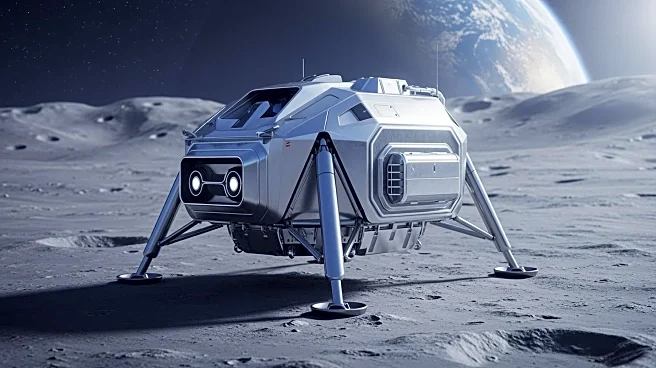What's Happening?
SpaceX has achieved a successful test flight of its Starship launch system, marking a significant milestone for the most powerful rocket ever constructed. The test, conducted at SpaceX's facilities in South
Texas, was the final demonstration for Starship Version 2, which will be retired in favor of a more advanced Version 3. This test follows a series of explosive failures earlier in the year, but recent successes have turned the tide for SpaceX. The Starship is designed to carry humans to Mars and is also slated for use by NASA to land astronauts on the moon by 2027. During the test, the Super Heavy booster safely separated from the Starship spacecraft, which then deployed dummy satellites to simulate future missions involving SpaceX's Starlink satellites.
Why It's Important?
The successful test of SpaceX's Starship is crucial for the company's ambitious plans to revolutionize space travel. The Starship's ability to deploy advanced Starlink satellites could significantly enhance global internet connectivity, offering 20 times more capacity per launch compared to current Falcon 9 missions. Moreover, the reusability of the Starship system promises to reduce costs and increase the frequency of space missions, potentially accelerating human exploration of Mars and the moon. This development is pivotal for NASA's Artemis program, which aims to return humans to the lunar surface and establish a sustainable presence there.
What's Next?
SpaceX is now focusing on the development of Starship Version 3, which is expected to conduct its first test launch later this year or early 2026. This new iteration will feature improved engine designs and mechanisms, aiming for rapid reusability and orbital refueling capabilities. These advancements are essential for deep space missions, including NASA's planned moon-landing mission. SpaceX must also address the challenge of propellant transfer in orbit, a critical step for long-duration missions. The success of these developments will be closely watched by industry stakeholders and could influence future space exploration strategies.
Beyond the Headlines
The Starship's design and capabilities could redefine the economics of space travel, making it more accessible and sustainable. The potential for rapid reusability and increased payload capacity may lead to new commercial opportunities in space tourism, satellite deployment, and interplanetary exploration. Additionally, the technological innovations required for the Starship's success could spur advancements in aerospace engineering and related fields, fostering a new era of innovation and collaboration in the space industry.











